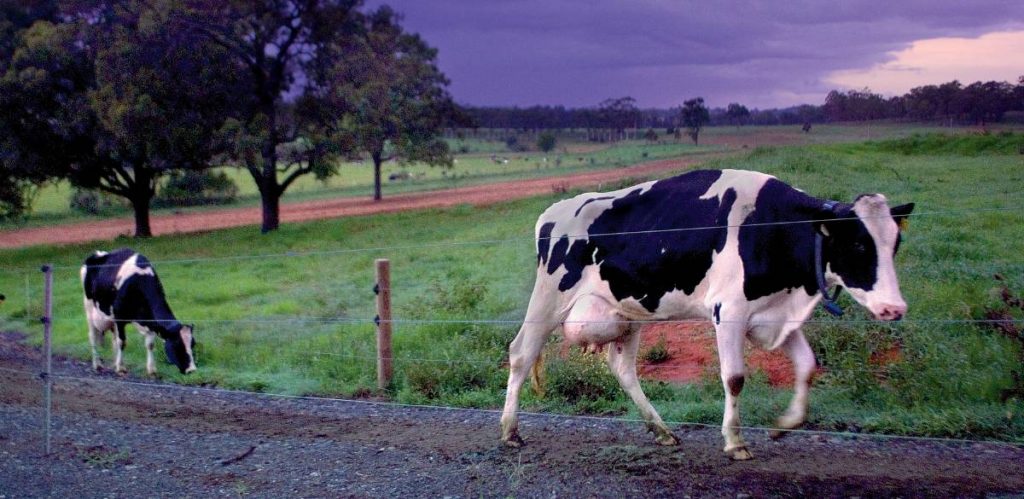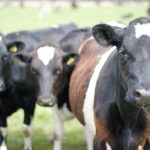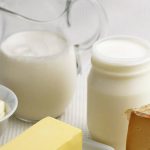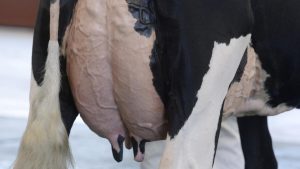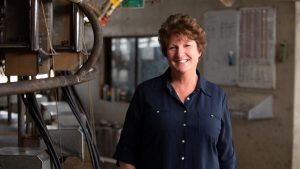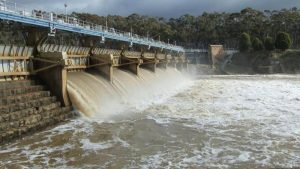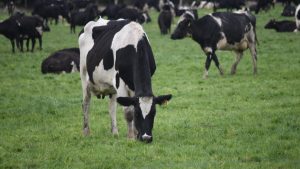
The 845 self-replacing spring-calving herd is on target to produce 530 kilograms of milk solids (MS) per cow this season, milked twice-a-day.
The 50-rotary dairy servicing the herd is supported by 200 hectares of milking area and 200ha of support country, within 330ha of flood-irrigated farmland.
A 400 megalitre groundwater licence is supported by 1200-1300ML high reliability water right from Glenmaggie Weir and diversion licences for 35ha of country.
A re-use dam ensures 95 per cent of the milking platform uses recyclable water; and effluent is spread over 100ha of the milking platform, in every second irrigation.
All hay and silage fed to the herd is made on farm. About 1.2 tonnes/cow of silage and hay mostly pasture silage is fed annually.
“In spring, we try to offer cows 20 to 25kg DM in spring. Dry cows require concentrates of 120 MJ ME (megajoules of metabolisable energy) and spring calvers 140 MJ ME,” he said.
Mr van Wees said he used a ‘traditional’ feed budget that tracked what pasture growth could be expected on average (including nitrogen boost) and total supplements available versus animal demand generated for milking and dry stock.
Autumn and winter were two important times for a feed budget because this planned out how the current season will be completed and sets up for the new season, he said.
“At this stage of the year we obviously have silage on hand but even with 600 tonnes DM carry over, we have calculated a shortfall of 250-300 tonnes of dry matter during winter to spring,” Mr van Wees said.
“We are using almond hulls to make up for where we are short and we are feeding 1kg/cow at the moment. Almond hulls work well for us and we have had no problems. Cows love them.
“This is the third year of drought in this region and everyone is waiting to see what will happen with autumn. Also the last couple of dry seasons we have purchased about 300 tonnes of hay to make up shortfall. In addition to the almond hulls, to bridge the feed gap, we are currently actively looking for a grain contract and we are looking right through to December 1.”
Mr van Wees said despite the current higher grain prices he would rather ensure that he had a feed supply secured at this time.
“I’d rather know that I have it and then I can budget accordingly than not have it all,” he said.
